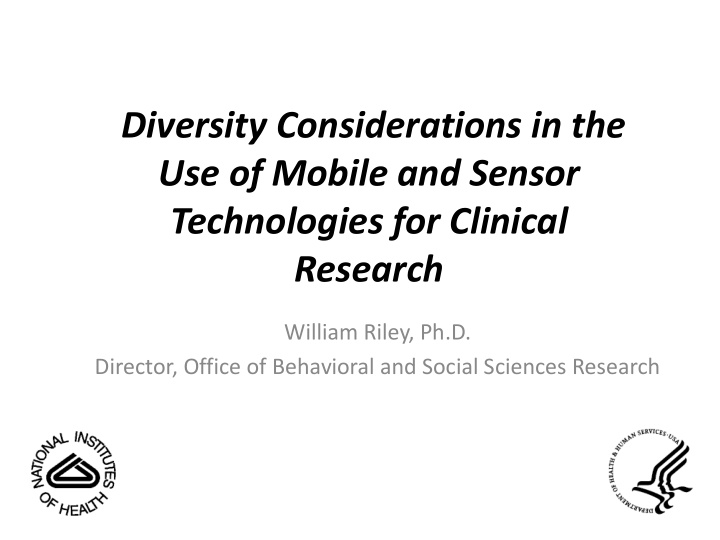



Diversity Considerations in the Use of Mobile and Sensor Technologies for Clinical Research William Riley, Ph.D. Director, Office of Behavioral and Social Sciences Research
Does the Digital Divide Still Exist?
Providing Access Only a Partial Fix Pew Internet and American Life
Minimizing the Digital Divide MOBILE AND WIRELESS ACCESS
International Usage - Cell phone usage high - Internet access moderate - Smartphone usage low
But potentially easier to incentive research participation in low resource countries via mobile payments
Smartphones for Research: One vs. Two • Preferable to upgrade current phone and plan than to provide a separate phone and plan – Already have some form of phone and plan – Integrates research efforts with routine use – Requires working with multiple networks and device providers to upgrade current phone and plan – Requires considerations of: • Non-research use of call and data plan • Continuation of upgrade once research study ends
Other Considerations • Mobile PROs also have DIF (differential item function) – Given limited number of items administered via mobile platform, even more critical that items selected are free from DIF • Differences in responses to prompts unknown – Will lower SES respond more or less than higher SES – Need to consider both missingness and lag from prompt to response by subgroups • For phone resident sensors (e.g., location, movement) do different subgroups use their phones differently? – Are physical activity estimates for men more or less accurate than for women?
And What about Wearables? • Wearables currently used predominately by young and affluent • In contrast to phones, less concern about providing wearable sensors to research participants • Unknown differences in use by subgroups • Differences in wearing wearables needs study
QUESTIONS
Recommend
More recommend